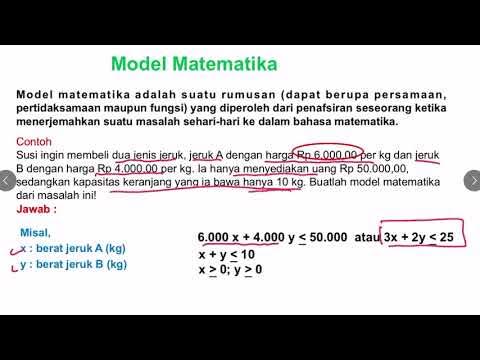An Example Proof using Identities of Regular Expressions
Summary
TLDRIn this lecture, the presenter guides viewers through the process of proving the equivalence of two regular expressions. Beginning with the left-hand side (LHS), the speaker demonstrates how to apply known identities to simplify the expression step by step, ultimately showing that the LHS matches the right-hand side (RHS). Key identities are employed to factor and manipulate terms, leading to a conclusive proof. This structured approach not only illustrates the application of theoretical concepts in formal language theory but also emphasizes the importance of systematic reasoning in mathematical proofs.
Takeaways
- 📘 The lecture focuses on proving the equivalence of two regular expressions.
- 🔍 The first regular expression (LHS) is presented for analysis.
- 📝 The importance of factoring out common terms in expressions is highlighted.
- 🔗 The expression '1 + 0*1' is identified as a repeating term in the LHS.
- ✏️ A key identity used in the proof is 'epsilon + R* R = R*'.
- 🔄 The process of simplification leads to recognizing the equivalence of terms.
- ✅ The final form of the LHS is compared directly with the RHS.
- ⚖️ The proof demonstrates how identities can simplify complex regular expressions.
- 📏 The result shows that both the LHS and RHS yield the same expression.
- 👩🏫 The importance of understanding regular expressions and their identities is emphasized for solving such problems.
Q & A
What is the main objective of the lecture?
-The main objective of the lecture is to prove the equivalence of two regular expressions.
What are the two regular expressions being compared?
-The two regular expressions are: LHS: 1 + 0^*1 + 1 + 0^*1 0 + 1 0^*1^*0 + 1 0^*11 and RHS: 0^*10 + 1 0^*1.
What does LHS stand for?
-LHS stands for 'Left-Hand Side', which refers to the expression being analyzed on the left side of the equation.
How does the speaker simplify the LHS expression?
-The speaker simplifies the LHS by factoring out the common term '1 + 0^*1' and then combining the remaining terms.
What regular expression identity is applied during the proof?
-The identity applied is ε + R^* R = R^*, which allows simplification of the expression.
What does the term 'ε' represent in the context of regular expressions?
-In the context of regular expressions, 'ε' represents the empty string.
What does the term '0^*' indicate?
-'0^*' indicates zero or more occurrences of the character '0'.
How does the final expression compare to the RHS?
-The final expression simplifies to the same form as the RHS, proving their equivalence.
What is the significance of recognizing common terms in the proof?
-Recognizing common terms simplifies the proof process, making it easier to manipulate and validate the regular expressions.
What is the overall takeaway from this lecture on regular expressions?
-The overall takeaway is the importance of understanding regular expression identities for simplifying and proving equivalences in expressions.
Outlines

Dieser Bereich ist nur für Premium-Benutzer verfügbar. Bitte führen Sie ein Upgrade durch, um auf diesen Abschnitt zuzugreifen.
Upgrade durchführenMindmap

Dieser Bereich ist nur für Premium-Benutzer verfügbar. Bitte führen Sie ein Upgrade durch, um auf diesen Abschnitt zuzugreifen.
Upgrade durchführenKeywords

Dieser Bereich ist nur für Premium-Benutzer verfügbar. Bitte führen Sie ein Upgrade durch, um auf diesen Abschnitt zuzugreifen.
Upgrade durchführenHighlights

Dieser Bereich ist nur für Premium-Benutzer verfügbar. Bitte führen Sie ein Upgrade durch, um auf diesen Abschnitt zuzugreifen.
Upgrade durchführenTranscripts

Dieser Bereich ist nur für Premium-Benutzer verfügbar. Bitte führen Sie ein Upgrade durch, um auf diesen Abschnitt zuzugreifen.
Upgrade durchführenWeitere ähnliche Videos ansehen

Lección 15: Teorema de Kleene (UACM - TC)

Solving Rational Equations | General Mathematics

MINIMIZATION OF DFA WITH EXAMPLE IN AUTOMATA THEORY || DFA MINIMIZATION || TOC

Simplifying Expressions Involving Indices | O Level Additional Mathematics

Arden’s Theorem

MENENTUKAN MODEL MATEMATIKA DARI SOAL CERITA SPtLDV
5.0 / 5 (0 votes)
